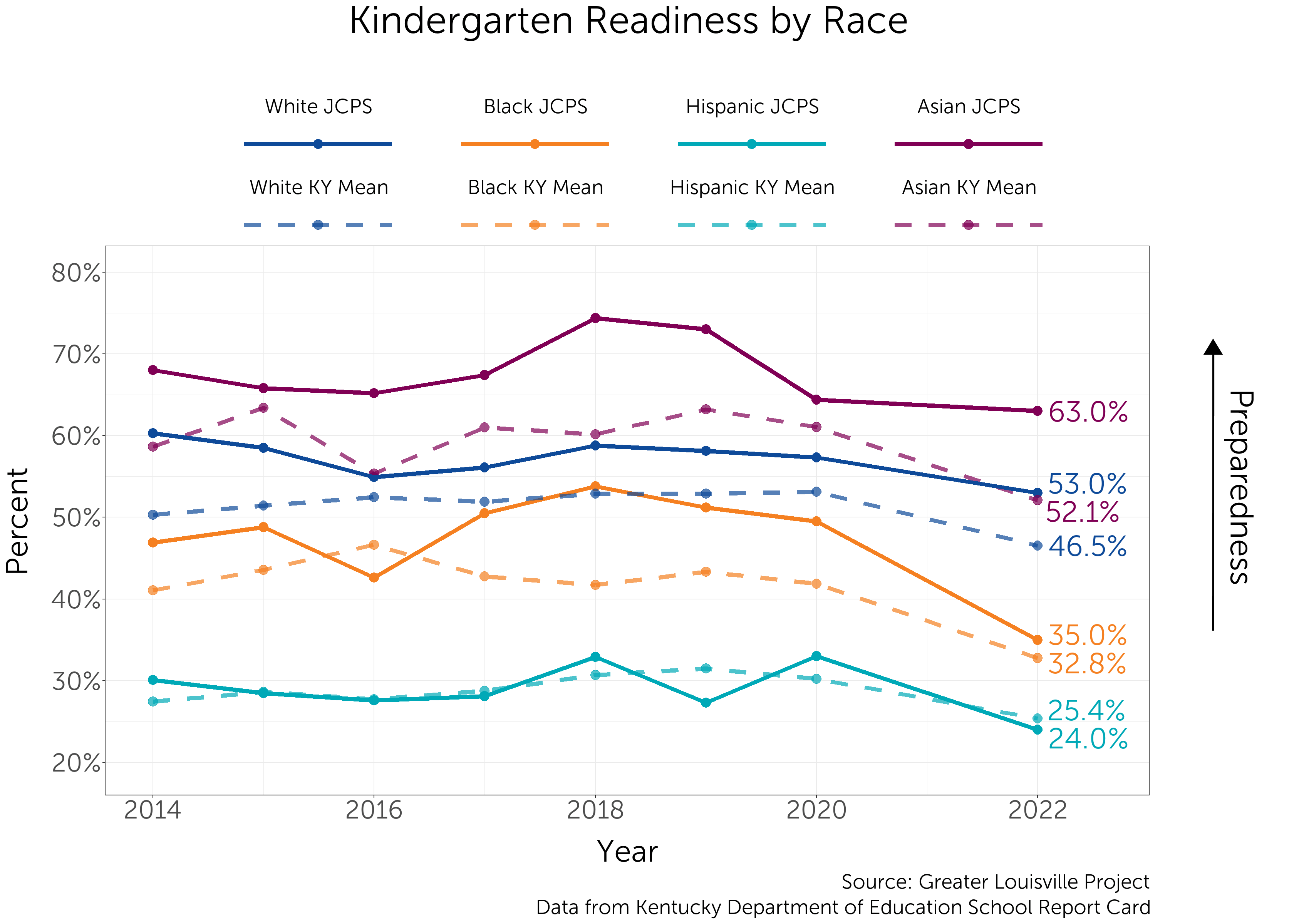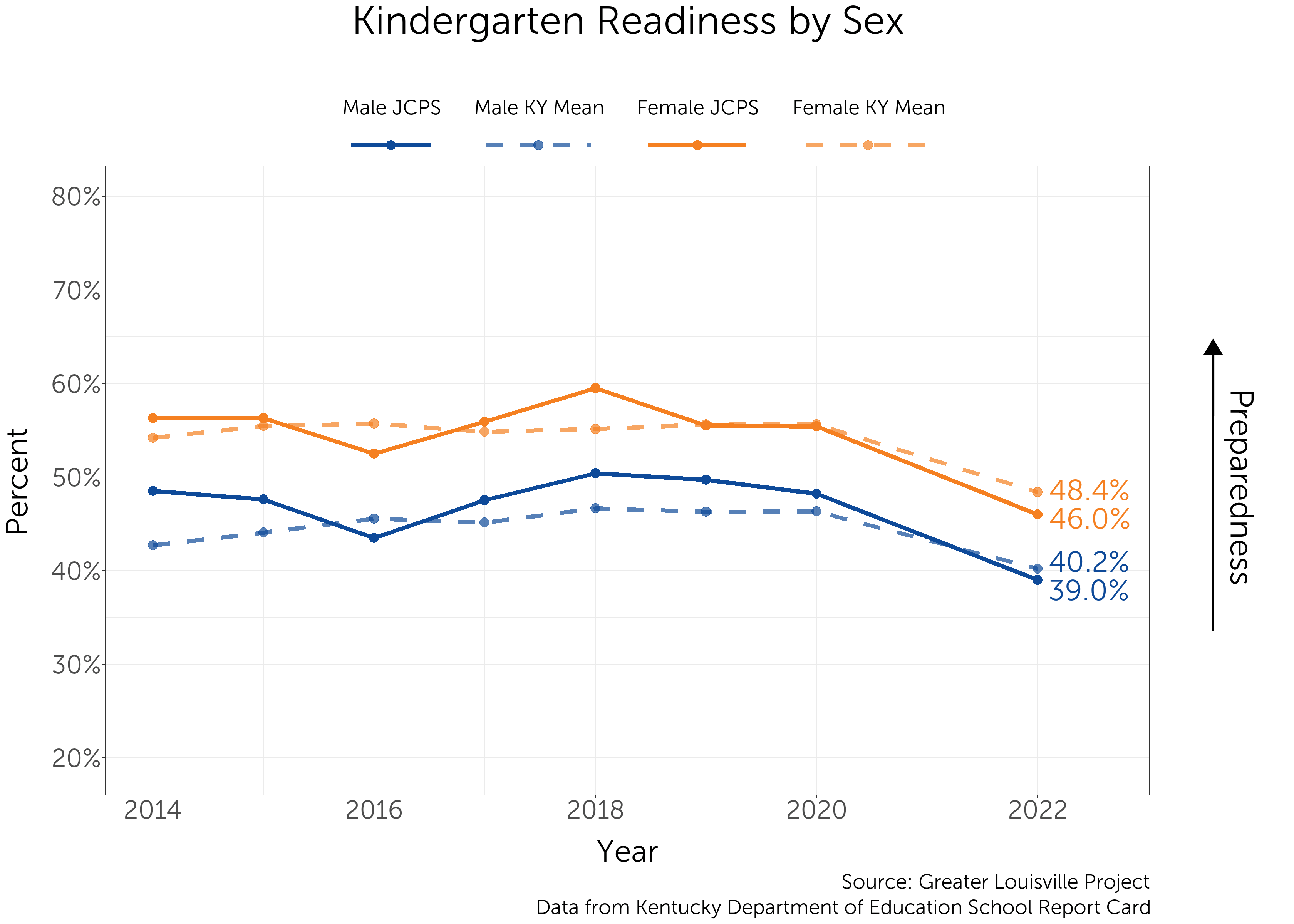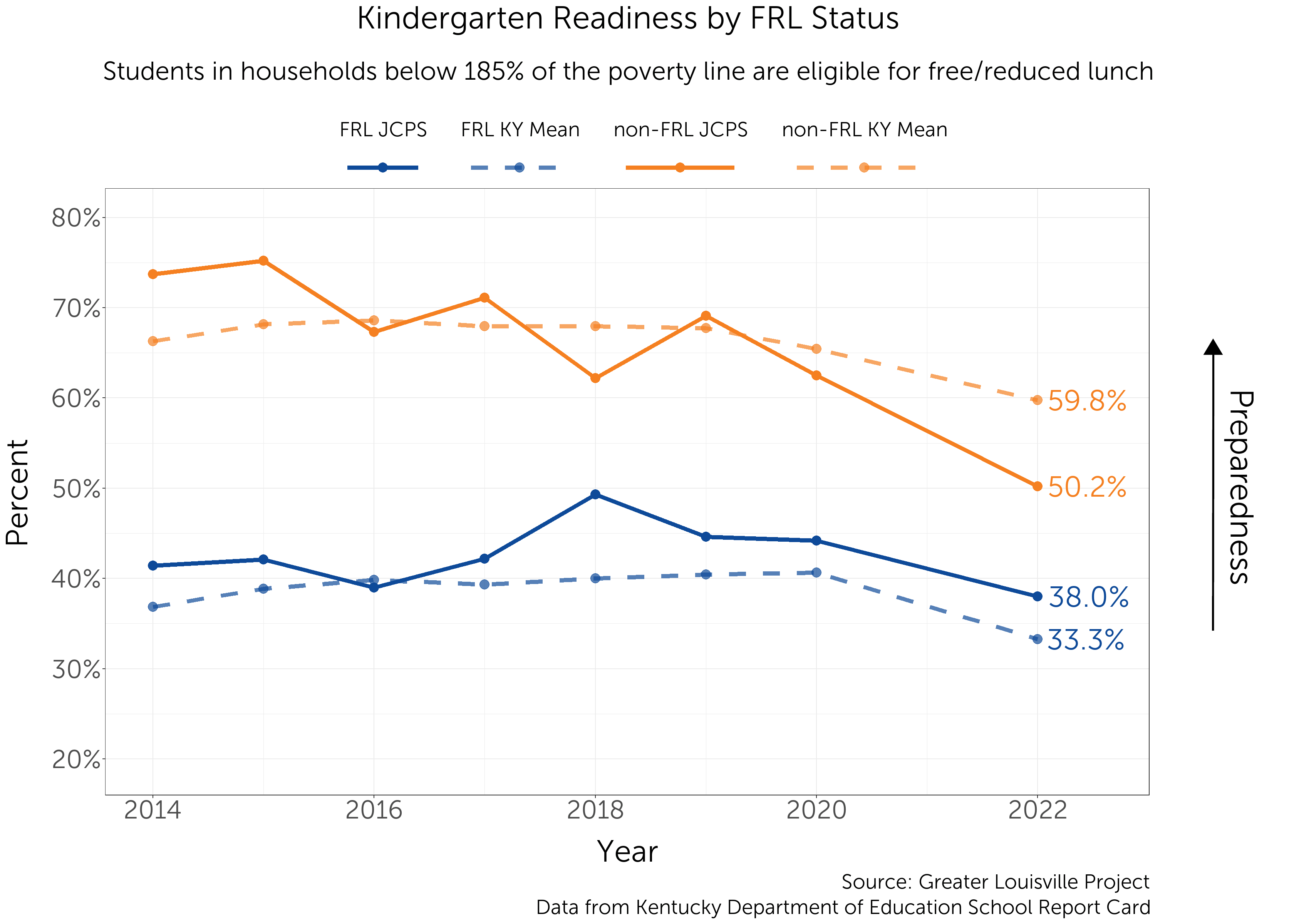Kindergarten Readiness
Early childhood education encompasses the quality and accessibility of educational investment for kids under 6 years old. Research suggests that addressing childhood education is a critical factor in improving the future educational attainment and socioeconomic transition of low-income communities. Poverty creates many barriers that impede young children’s development, placing them at a disadvantage even before they enter the classroom. The metric associated with early childhood education is “kindergarten readiness,” in alignment with the Ready for K Alliance.
Kentucky school districts evaluate kindergarten readiness using the BRIGANCE Early Childhood Kindergarten Screen III, which assesses child development across five areas:
- Academic/Cognitive Development
- Language Development
- Physical Development
- Self-Help Skills
- Social and Emotional Skills
For a deeper discussion of kindergarten readiness, its importance, and its limitations, please see our 2021 Early Childhood Report.




